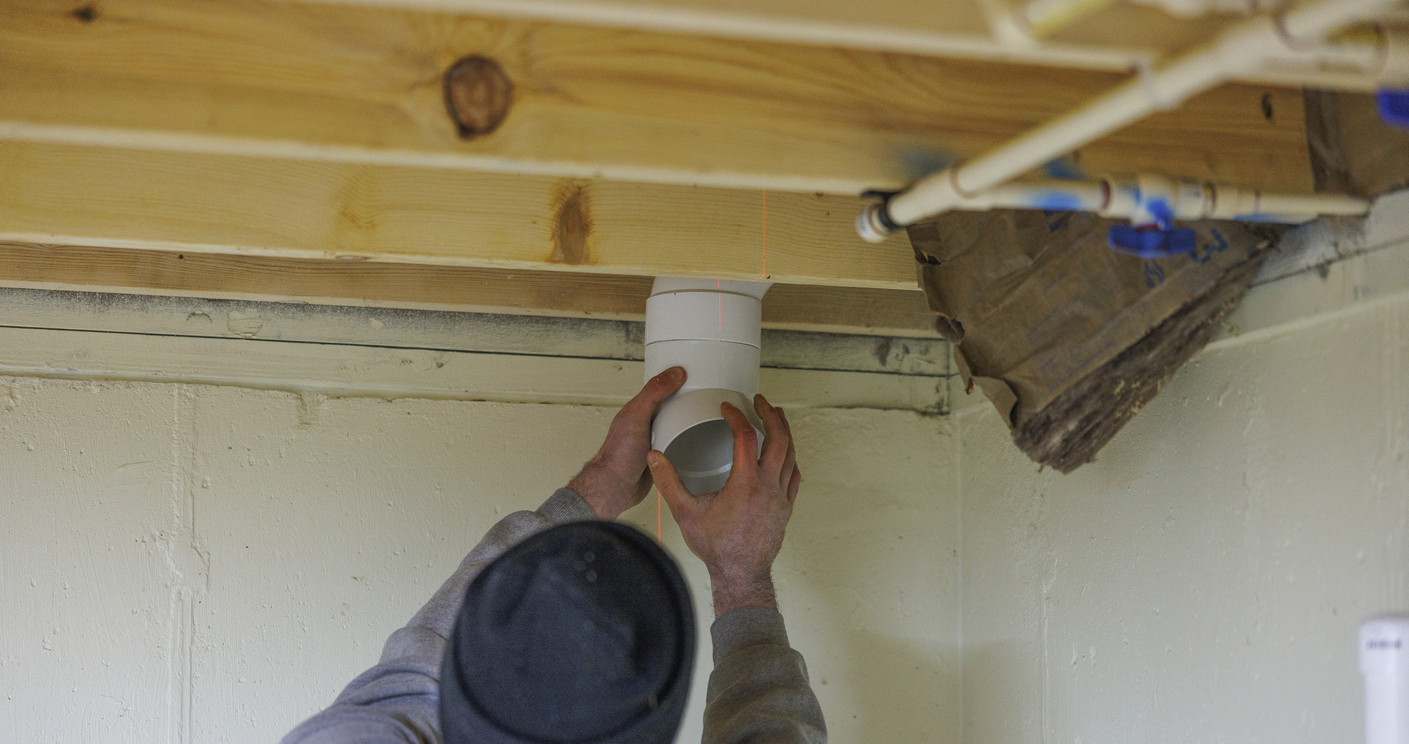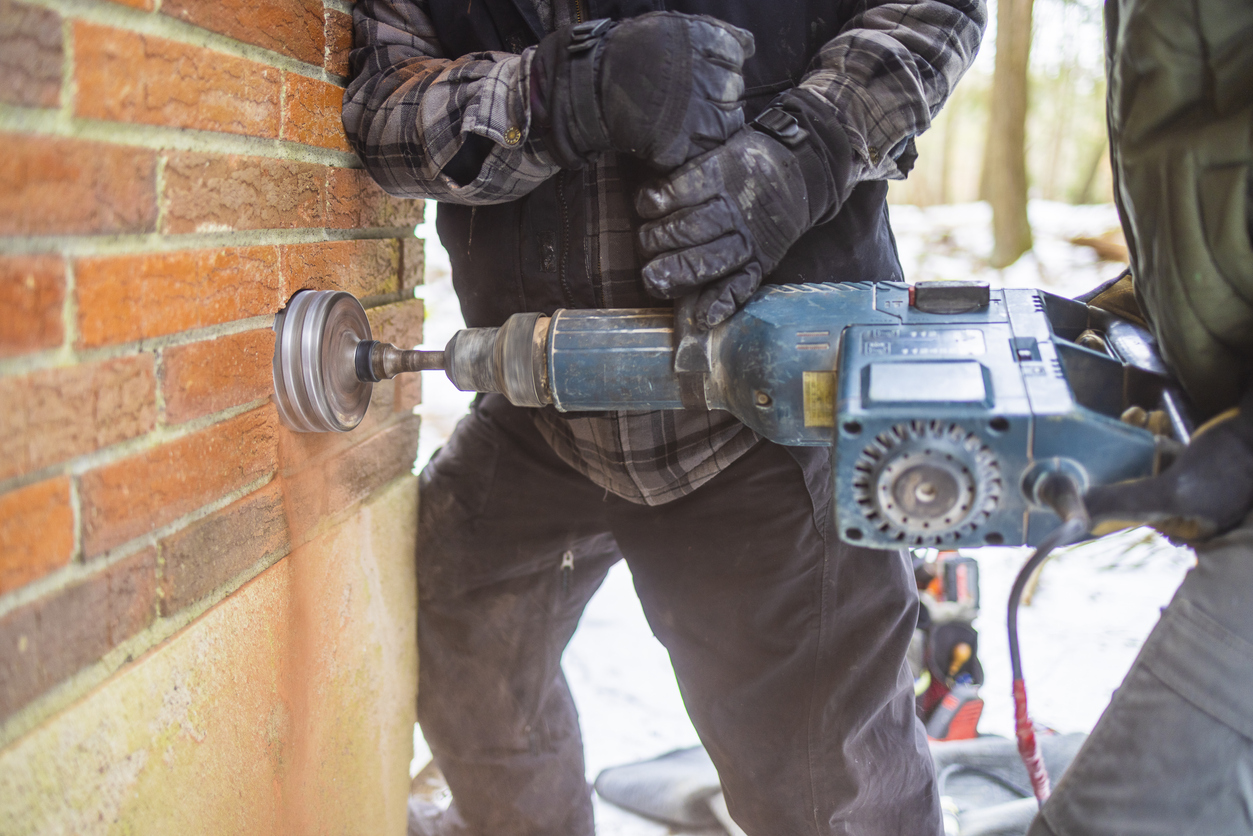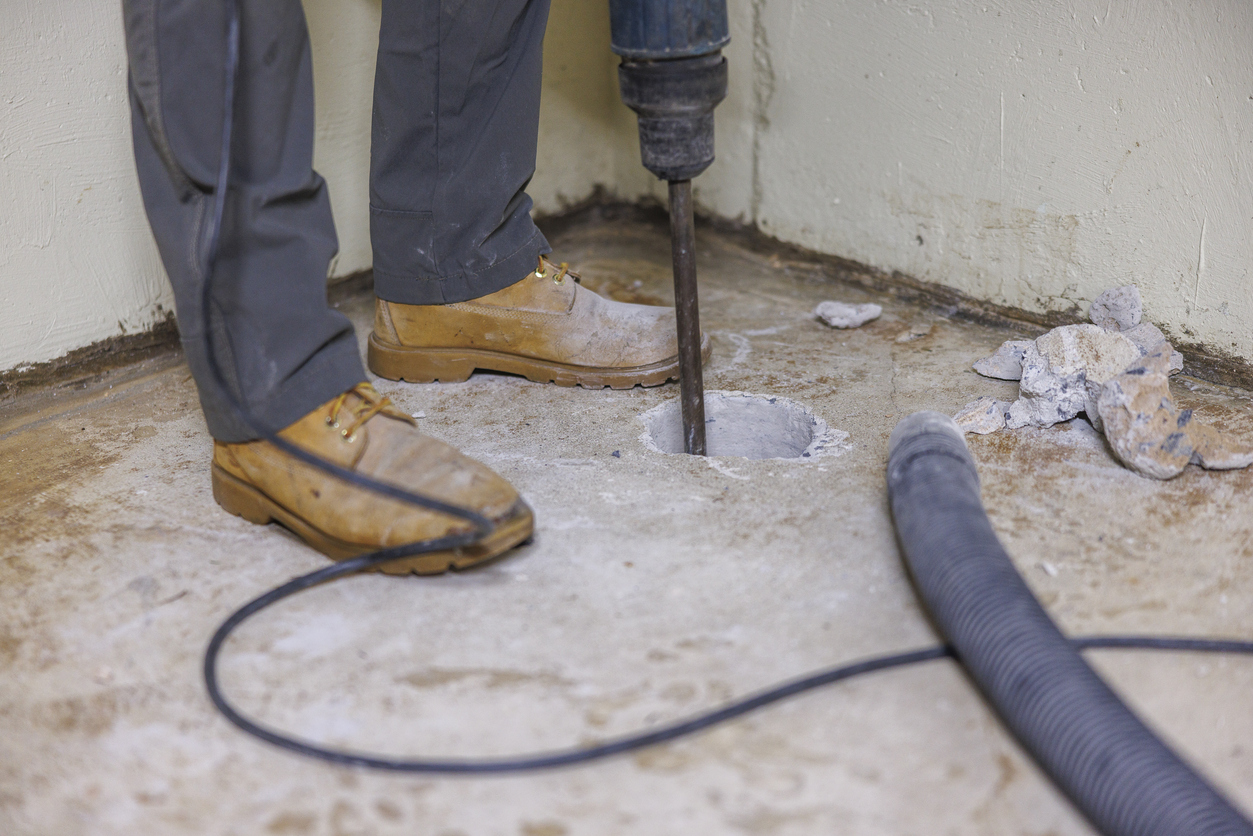We may earn revenue from the products available on this page and participate in affiliate programs. Learn More ›
A silent killer is lurking in homes across America—the invisible invader known as radon. You can’t see, taste, or smell radon, but you are likely breathing it in every day, and it may be compromising your health.
Ahead, learn what radon is, how it can affect your health, and discover radon-resistant building techniques that can improve the air quality in your home so you can protect your household from radon exposure and ensure a healthier living space for you and your family.
RELATED: Solved! What Are Safe Radon Levels for My Home?
What is radon?
Radon is an invisible, odorless, tasteless gas produced naturally from the breakdown of radioactive metals in soil, rock, and water. When radon is emitted from soil, it dissipates into the air.
But when radon is trapped inside a structure, gas levels can build up to a level harmful to humans. As houses are now more airtight than ever before, radon buildup is a serious concern for the modern homeowner.
How does radon affect health?
Radon gas becomes a health hazard when we are exposed to too much of it for too long. We are all exposed to radon daily, as it is naturally present in the air around us, but outdoor concentrations of radon are generally very low and unharmful. Inside houses, however, radon can get trapped and build up to unsafe levels.
Breathing in high levels of radon over time has been definitively linked to lung cancer. According to Dr. Gieske, Director of Lung Cancer Screening at St. Elizabeth Healthcare, radon overexposure can “cause mutations in the cells of the lung…leading to uncontrolled cell growth and the formation of tumors, which may develop into lung cancer.”
Radon-induced lung cancer is more prevalent than many realize, Dr. Gieske explains. “We know that smoking is related to 80 percent of lung cancers,” he states. “It is believed that radon causes the majority of the 20 percent of lung cancers that are not related to smoking.” This makes radon the second leading cause of lung cancer in the United States, responsible for 21,000 lung cancer deaths per year, according to the CDC.
How does radon get inside a home?

Radon gas enters buildings primarily through cracks or holes in the foundation. There is no way to predict which buildings may have high levels of radon, and levels can vary widely from building to building. The only way to know if your home has elevated radon levels is to test it with an indoor radon tester like the Airthings 2989 View Radon at Amazon.
While some regions of the U.S. are known to be generally higher in radon concentration than others, any home or building within the U.S. may be affected. Elevated radon levels have been found in every state in the U.S., and the U.S. Environmental Protection Agency (EPA) estimates that nearly 1 in 15 homes in the United States has unsafe radon levels.
RELATED: 11 Ticking Time Bombs in Your House—and What to Do About Them
How do you test your home for radon?

The EPA recommends that all homes be tested for radon. Testing is quick and simple. You can contact your state radon office to arrange testing by a radon mitigation professional, or you can purchase a test kit online. Most hardware stores sell kits and they are available at online retailers, too.
If the radon levels in your home are greater than 4 pCi/L, the EPA recommends that you fix your home to mitigate radon exposure to safe levels.
RELATED: Yes, Your Home Needs a Radon Test Kit — And These Are the Best
What are radon-resistant construction techniques?

Fortunately, there’s a lot you can do to protect yourself and your home from high radon levels. Radon mitigation and radon-resistant building practices focus on preventing radon from entering your home and being trapped there.
“When installed properly and completely, these simple and inexpensive techniques can help reduce indoor radon levels in homes,” states Tim Carroll, Deputy Associate Administrator of the EPA.
There are several types of radon reduction methods, but most involve two basic steps:
- Draw radon from below the home’s foundation into a pipe that exhausts to the outdoors.
- Seal the foundation and building components so radon can’t bypass the pipe.
Radon mitigation systems can be passive or active.
- Passive systems rely on natural forces, such as soil air movement, buoyancy, and temperature, to coax radon away from a building and disperse it outdoors.
- Active systems rely on mechanical components, such as a fan, to actively draw radon from beneath a building and vent it outside. Active systems tend to be more effective in reducing radon concentrations to safe levels.
What is radon-resistant new construction?

The best time to safeguard a home from radon exposure is when it is being built. Radon-resistant new construction (RRNC) techniques involve a set of methods and materials builders use at the time of construction to protect new homes from elevated radon levels.
“Installing them at the time of construction makes it easier and less expensive to reduce radon levels,” says Carroll. It can also be more aesthetically pleasing, as components such as vent pipes can more easily be hidden within home features. It’s more difficult and expensive to add these features later.
Most RRNC systems consist of four basic steps:
1. Sub-slab components
RRNC homes are usually built on a 4- to 6-inch thick gravel layer. This creates a permeable pathway for radon gas to migrate and be drawn out from under the house through a perforated PVC pipe buried in the gravel. Additionally, high-density plastic sheeting placed on top of the crushed stone acts as a barrier to prevent radon from escaping upwards into the home.
2. Piping
The PVC pipe draws radon up from under the foundation through the building floors and out a vent stack above the roof.
3. Electrical wiring
A junction box installed in the attic of new homes can allow for the future installation of a fan should the passive system be insufficient to draw enough radon out of the house.
4. Fan installation
Once a new home is occupied, its radon levels should be tested to ensure the passive RRNC system is adequate. If testing shows that radon levels are still too high, install a radon fan to activate the system and reduce radon concentration to a safe level.
The EPA recommends that home buyers ask if builders used radon-resistant construction features and if the home was built in compliance with the EPA’s Indoor airPLUS construction specifications.
RELATED: The Best Air Quality Monitors to Keep Your Home Safe
How do you mitigate radon in existing homes?

If testing reveals there are elevated radon levels in your existing home, there are several options to fix your home and reduce radon levels. Although mitigation systems are more expensive to install in existing homes than at the time of construction, the costs are not generally prohibitive.
The EPA recommends using a certified or qualified radon mitigation contractor that is trained in fixing radon problems in homes. A qualified radon mitigation contractor can give you an estimate based on your home’s structure and unique features. You can find a qualified radon professional by contacting your state radon program or through these national radon proficiency programs, both of which offer radon mitigation certification:
The right radon mitigation system for your home depends on the house’s structure. The mitigation contractor will consider how high your radon levels are, your budget for installation and system operation, the size of your home, and the type of foundation it has. Your home foundation type is the most important consideration, as some systems work only for certain types of homes.
RELATED: How Much Does a Radon Mitigation System Cost?
Basement and slab-on-grade homes
The most common radon reduction system for homes with basements or those with slab-on-grade foundations is active sub-slab suction, also known as sub-slab depressurization. The contractor drills holes through the floor slab and inserts suction pipes into the gravel or soil below.
A vent fan connected to the pipe draws the radon from beneath the home up through the pipes and vents it outdoors above the roof. This creates a vacuum under the house slab that draws the radon out and prevents it from seeping into the home.
Crawl space homes
Submembrane suction, when properly installed, is considered the most effective radon mitigation system for crawl space homes. This system involves installing a high-density plastic sheet over the earth floor to form a mechanical barrier between the radon gas and the home. A vent pipe and fan draws the radon out from under the sheet and releases it outdoors.

Other radon mitigation methods
Several other supplementary radon mitigation techniques can be used in any type of home. These methods are not as effective on their own but can be helpful when combined with an active or passive suction and venting system.
- Sealing cracks and openings in the foundation decreases the permeability of the foundation and helps limit the flow of radon up from the soil beneath the home. It can also make other radon mitigation systems more effective and cost-efficient.
- Air pressurization uses a fan to circulate air and create enough pressure at the low level of the house to prevent radon from entering. This method alone is not as effective as other methods and can affect the home’s energy efficiency.
- A heat recovery ventilator (HRV) can increase ventilation in the home by taking in outdoor air and heating or cooling it with outgoing indoor air. When properly balanced and maintained, HRVs can help to reduce radon levels by ventilating the basement.
- Natural ventilation, such as opening windows, doors, and vents on lower levels of the home, can provide a temporary reduction in radon levels. However, if there are no other mitigation systems in place, radon concentrations will return to previous levels once the openings are closed.
The EPA takes radon exposure seriously. “EPA administers several programs to raise awareness about radon risks and encourage the public to take steps to protect the health of themselves and family members,” states Carroll.
Take the EPA’s advice and get your home tested, and if it reveals unsafe levels of radon, get your home fixed by a qualified radon mitigation professional.

